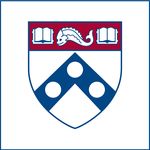The University Professorship of Medicine & Anthropology
 University Professorships were created in 1961 to be awarded to members of the faculty “who have made contributions to the world of learning…[and are] eminent scholars who have demonstrated the breadth of intellectual vision which encompasses several aspects of the arts, sciences and professional fields. Their published works and professional activities must have attained wide recognition from well-known scholarly sources.
University Professorships were created in 1961 to be awarded to members of the faculty “who have made contributions to the world of learning…[and are] eminent scholars who have demonstrated the breadth of intellectual vision which encompasses several aspects of the arts, sciences and professional fields. Their published works and professional activities must have attained wide recognition from well-known scholarly sources.
“The privileges and obligations of University Professors are to serve the University community and its educational programs broadly…with the most effective expression of their talents in instruction, research, and service.”
Nobel Laureate Baruch Blumberg, MD, PhD held the Professorship from 1977 to 2011. Dr. Blumberg was best known for identifying the hepatitis B virus, a discovery that led to the first vaccine against hepatitis B—the first vaccine capable of preventing human cancer. He won the 1976 Nobel Prize along with D. Carleton Gajdusek, for “discoveries concerning new mechanisms for the origin and dissemination of infectious diseases.”
Dr. Blumberg (1925 -2011) was educated at Union College while in the U.S. Navy. After leaving active duty in 1946, he entered the College of Physicians and Surgeons at Columbia. He earned a PhD from Balliol College at Oxford University. After working at the NIH from 1957 to 1964, he came to the Institute for Cancer Research in Philadelphia to head the new clinical research initiative. Also in 1964, Dr. Blumberg joined the Perelman School of Medicine as Professor of Medicine. He gained a second appointment as Professor of Anthropology and taught medical anthropology at the Perelman School for many years. The University granted him the distinction of University Professor of Medicine and Anthropology in 1977 and an honorary degree in 1990.
Dr. Blumberg served on the Penn faculty until 1989, when he returned to Oxford to be Master of Balliol College. In 1999 he became the Founding Director of NASA’s Astrobiology Institute, where led efforts to develop technology that could detect microorganisms in space and extreme environments on Earth.

